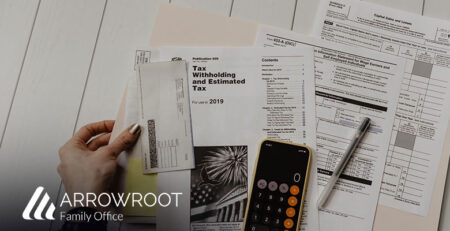How to Choose a Right Retirement Plan


Retirement Overview
Retirement is when an individual chooses to permanently or semi-permanently leave the workforce. This form of permanent leave is a common occurrence in the United with individuals typically retiring over the age of 65. In order to retire, one must accumulate savings through various savings and investment strategies that allow one to comfortably retire without coming back to the workforce. Many nations also have national pension or benefits systems, like Social Security in the United States. This system is in place to supplement a retiree’s income; however, this supplemental income is typically not enough to comfortably live off of, requiring Americans to continue to save money through alternative investment strategies like real estate or the stock market.
When looking at potential investment strategies for retirement, it is important to first understand exactly what retirement is, what is required of an individual in terms of savings for retirement, and what investment strategies to look into or what accounts to open. In order to retire with minimal or partial Social Security Benefits, individuals typically wait till the age of 62. In order to receive full Social Security benefits, individuals often wait till the age of 67 before considering retirement. Social Security benefits vary based on individual income and other definitive factors. These benefits should be explored to the fullest potential when planning for retirement, as this type of supplemental income is one of the most important aspects of a retirement strategy. Once an individual retires, Social Security often becomes the only source of active income besides the income received from the sale of investments or assets.
This level of active income is not enough to live off of. Ensuring that you and your family do not run out of money in your lifetime is crucial, so proper retirement planning is essential for a good quality of life post-retirement. On average, individuals have the potential to live anywhere from 15 to 20 years past the age of 65, or the typical retirement age. With proper health, dieting, and exercise, that number can increase by another 10 years or more, so ensuring that enough money is saved or invested as a backup cushion in order to have savings to fall back on is essential. Every individual and family’s time horizon is different so planning accordingly and considering all common potential scenarios by creating a customized plan and strategy is essential.
Types of Retirement Accounts
When saving for retirement, individuals often use the following three investing and saving strategies in order to save for retirement. These include employer-sponsored retirement plans such as a 401(k), retirement savings such as various investments (IRA), and Social Security retirement benefits.
The two main types of investment accounts individuals use to save and invest for retirement are 401ks and IRAs. A 401k plan is an employer-sponsored retirement savings plan taken by many employees. This plan has tax advantages and provides various cost-saving benefits to individuals saving for retirement. Once an employee signs up for a 401(k), they agree to contribute a small percentage of each paycheck directly into a retirement investment account sponsored by the employer. The employer has the opportunity to match an entire part or all of that specific contribution. The typical match is around 50% of what is put in, but the actual amount is dependent on the employer’s matching policy. Employees are allowed to contribute around $20,500 per year to the account as an employee. While employees do get to select from a variety of investment options, typically mutual funds, the selection is normally not as diverse or plentiful as with an IRA.
While this does make a 401k much safer and more risk-averse than an IRA, IRAs have some of their own benefits that make them a valuable investment option. An IRA, or an Individual retirement account, is a tax-deferred investment account created to assist individuals with retirement savings. An IRA provides similar tax benefits and advantages as a 401k and promotes long-term incentives to invest and hold stocks for years to build interest. With an IRA, the selection of stocks or mutual funds is endless, and individuals have the ability to invest on their own or with a financial advisor. However, investors are not able to contribute as much as they can with a 401k with a limit set at $6,000 for 2022.
How to Choose The Right Investment Account for You?
Both a 401k and IRA are excellent tools to take advantage of when preparing a savings or investment plan for your retirement. However, knowing which accounts to use and invest with based on individual investment needs, wants, and goals is important in order to properly prepare for retirement and maximize the amount of savings available when one leaves the workforce for good. As a member of the workforce, all employees should take advantage of the 401k provided to them by their employer. No matter how big or small the employer match is to employee contributions, whatever amount they provide is still considered to be additional added funds into the account. So making sure to not miss out on this monetary opportunity is crucial. If possible, attempting to maximize the potential contribution into a 401k account before investing in any other is crucial.
A great secondary account to invest in is an IRA. This account provides more flexibility and diversification of one’s portfolio. Due to the fact that an IRA has more variability in the selection of stocks and funds to invest in, it is the perfect account to add that variety to your portfolio. Because the contribution limit is much lower with an IRA than with a 401k, it is much easier to maximize it.
Both of these accounts and strategies are great tools put in place in order to help assist employees with retirement preparation and planning. Asking which accounts more closely aligns with specific retirement goals and allows for greater financial independence is important to determine which of these accounts to invest in. Taking full advantage of whichever account is chosen is essential in order to comfortably retire in 2022.

Helping you achieve your evolving financial objectives
FAQs
- Internal Revenue Service. “Traditional and Roth IRAs”. Accessible From: https://www.irs.gov/retirement-plans/traditional-and-roth-iras
- Internal Revenue Service. “Topic No. 451 Individual Retirement Arrangements (IRAs)”. Accessed July 15, 2021. Accessible From: https://www.irs.gov/taxtopics/tc451
- Internal Revenue Service. “Retirement Topics – IRA Contribution Limits”. Accessible From: https://www.irs.gov/retirement-plans/plan-participant-employee/retirement-topics-ira-contribution-limits
- Internal Revenue Service. “Traditional IRAs”. Accessible From: https://www.irs.gov/retirement-plans/traditional-iras
- Internal Revenue Service. “IRA Deduction Limits”. Accessible From: https://www.irs.gov/retirement-plans/ira-deduction-limits
- Internal Revenue Service. “IRS Announces Changes to Retirement Plans for 2022”. Accessible From: https://www.irs.gov/newsroom/irs-announces-changes-to-retirement-plans-for-2022
- Internal Revenue Service. “New Income Ranges for IRA Eligibility in 2021”. Accessible From: https://www.irs.gov/newsroom/new-income-ranges-for-ira-eligibility-in-2021
- Internal Revenue Service. “Publication 590-B (2020), Distributions from Individual Retirement Arrangements (IRAs)”. Accessible From: https://www.irs.gov/publications/p590b#en_US_2019_publink1000231061
- Internal Revenue Service. “Amount of Roth IRA Contributions That You Can Make for 2022”. Accessible From: https://www.irs.gov/retirement-plans/plan-participant-employee/amount-of-roth-ira-contributions-that-you-can-make-for-2022
- Internal Revenue Service. “401(k) Plan Overview”. Accessible From: https://www.irs.gov/retirement-plans/plan-sponsor/401k-plan-overview
- Internal Revenue Service. “IRS Announces 401(k) Limit Increases to $20,500”. Accessible From: https://www.irs.gov/newsroom/irs-announces-401k-limit-increases-to-20500
- Internal Revenue Service. “Retirement Topics – 401(k) and Profit-Sharing Plan Contribution Limits”. Accessible From: https://www.irs.gov/retirement-plans/plan-participant-employee/retirement-topics-401k-and-profit-sharing-plan-contribution-limits
- Internal Revenue Service. “Retirement Topics – Hardship Distributions”. Accessible From: https://www.irs.gov/retirement-plans/plan-participant-employee/retirement-topics-hardship-distributions
- Internal Revenue Service. “Roth Comparison Chart”. Accessible From: https://www.irs.gov/retirement-plans/roth-comparison-chart







Leave a Reply